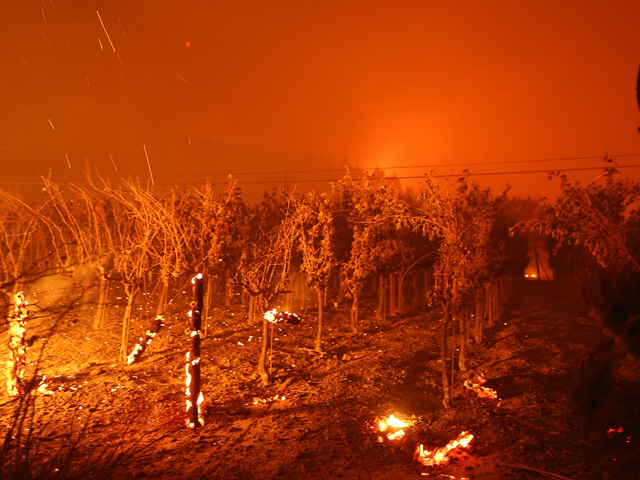Ag Weather Forum
When Crop Insurance Gets Burned Out
One of the big features outlined in the updated climate normals for temperature and precipitation, now covering the period from 1991-2020, is a precipitation pattern that can be described as dry west-wet central and east. The western half of the contiguous United States has a definite dry signal.
This drier signal is combining with a warming pattern to bring about a longer and more intense wildfire season. The largest fire was the Bootleg Fire in southern Oregon, which as of July 26 morning, had burned about 409,611 acres (640 square miles) of forest and grassland and was only 53% contained. These fires are creating their own weather; there have been reports of the Bootleg Fire producing an actual fire tornado extending thousands of feet high and packing winds of more than 65 miles an hour.
P[L1] D[0x0] M[300x250] OOP[F] ADUNIT[] T[]
The wildfires have wreaked all sorts of havoc on society and the entire physical areas in which they have occurred. But, one aspect of the wildfire scourge that up until now was under the attention scope a bit, is how huge property loss payments that insurance companies have had to make may affect an entire industry -- in this case, winemaking. This is no small detail; Napa Valley, California produces only 4% of the wine in California, but is responsible for 30% of the total value. Now, Napa Valley wine grape growers and wineries are starting to lose their insurance coverage.
According to Rex Stults of the Napa Valley Vintners Association, some wineries were unable to get any insurance coverage for this year because of the fires. In other cases, the premiums skyrocketed; one winery cited had a quote for coverage that was four times as high as the previous year, with only 15% of coverage of the prior year. In the insurance industry parlance, some wineries went into this season naked. The California legislature is considering a bill that would allow some insurance coverage through a high-risk pool that would be run by the state. However, that coverage, even if it is enacted, is not available for this year. In addition, any coverage would likely be far less than an individual operation's policy before the fire damage began.
Wildfire occurrence is going on in a backdrop of steadily rising temperatures in the Far West. Stults told me that 10 years ago in 2011, the Napa Valley Vintners commissioned a Napa-specific temperature change study to assess future patterns. The study, conducted by scientist Dan Cayan of the Scripps Institute, found some temperature changes that sound familiar to what we have seen in the Midwest: Daytime high temperatures in Napa Valley are projected slightly higher than the long-term average, but the overnight temperatures are projected to be much higher than the long-term average. For a crop as sensitive to temperature patterns as grapes, this is a significant conclusion. It indicates a possible threat to the premium wine grape varieties that are produced in Napa Valley.
During this season of drought in some large portions of the central U.S. (see https://droughtmonitor.unl.edu/…), the comment has likely been made to the effect of "... thank goodness for crop insurance." This year, some producers in a specialty-crop sector of agriculture are experiencing a loss of that back-up, due to weather finally, literally, burning through the coverage.
Bryce Anderson can be reached at bryce.anderson@dtn.com
Follow him on Twitter @BAndersonDTN
(c) Copyright 2021 DTN, LLC. All rights reserved.




